Mysterious and bewitching: the surface of Neptune
4th Aug 2023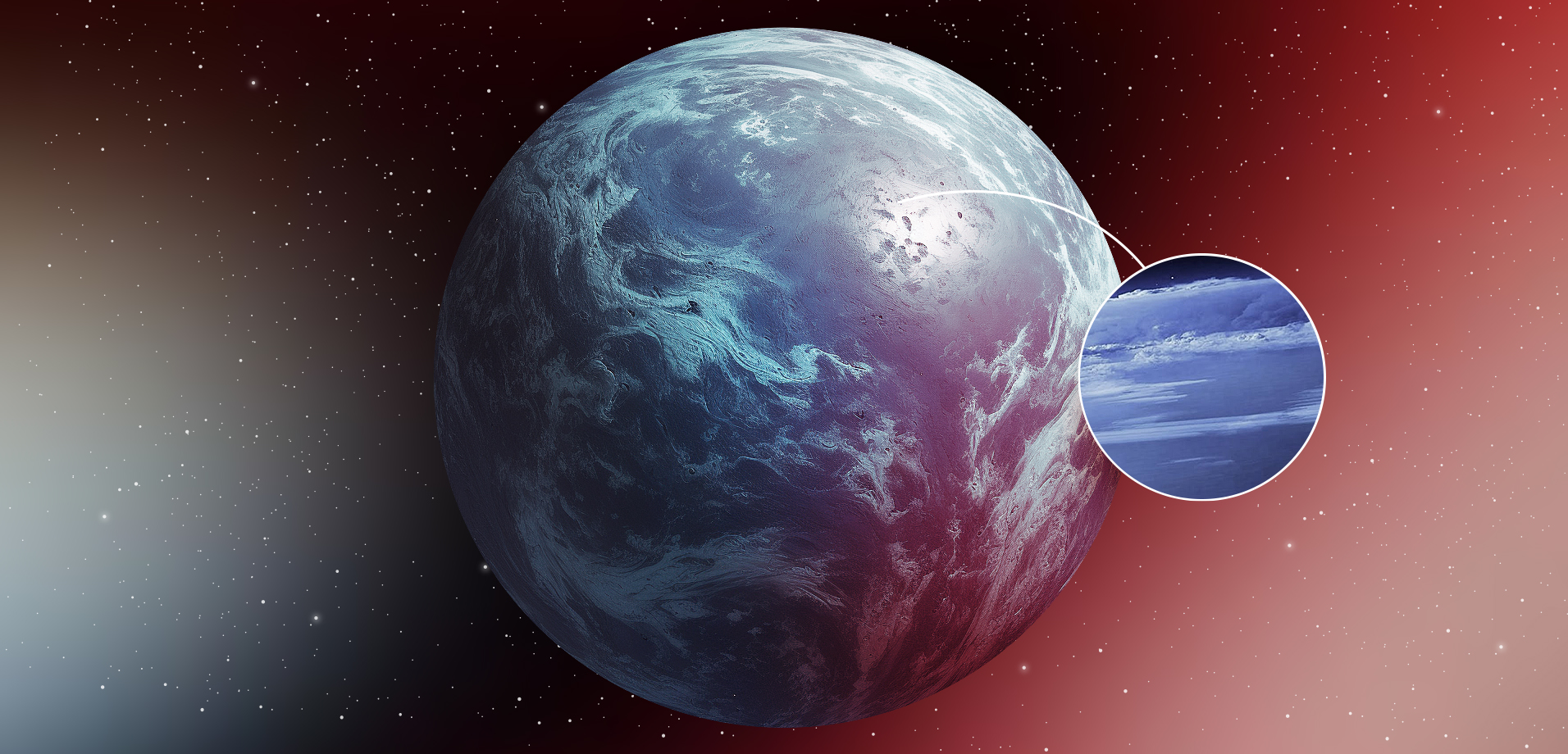
Neptune is the most distant planet from Earth, which only fuels our desire to know everything about it. In past articles, we told you about Neptune moons and what colour it is, and today it’s time to learn about the surface of Neptune: what it looks like, what it consists of, and what space secrets it holds.
Does Neptune have any surface to walk on?
Neptune is a gas giant, which means it does not have a solid surface, like Earth, and it will not be possible to walk on it. The planet’s outer shell gradually passes from a gaseous state to a liquid one. The only solid part of Neptune is its iron-nickel-silicate core, which lies at a depth of about 45 thousand km from the upper atmospheric layer.
If we imagine that a spaceship with astronauts will someday approach Neptune, it will simply have nowhere to land. It will sink deeper and deeper into the gas layers, exposed to powerful vortex currents that abound in the atmosphere. It will probably collapse since it cannot maintain stability for a long time in such harsh conditions.
How big is Neptune’s surface?
Due to the lack of a hard layer, Neptune’s surface area cannot be accurately determined. However, scientists often measure the “surface” of this planet by the level at which atmospheric pressure reaches 1 bar, which is equivalent to the average atmospheric pressure at sea level on Earth. This occurs approximately 5,000 kilometres (3,100 miles) below the cloud tops.
Based on these data, the surface area of Neptune is about 7.618 billion square kilometres or approximately 2.941 billion square miles, which is 15,000 times the surface of the Earth!
What is the surface of Neptune made of?
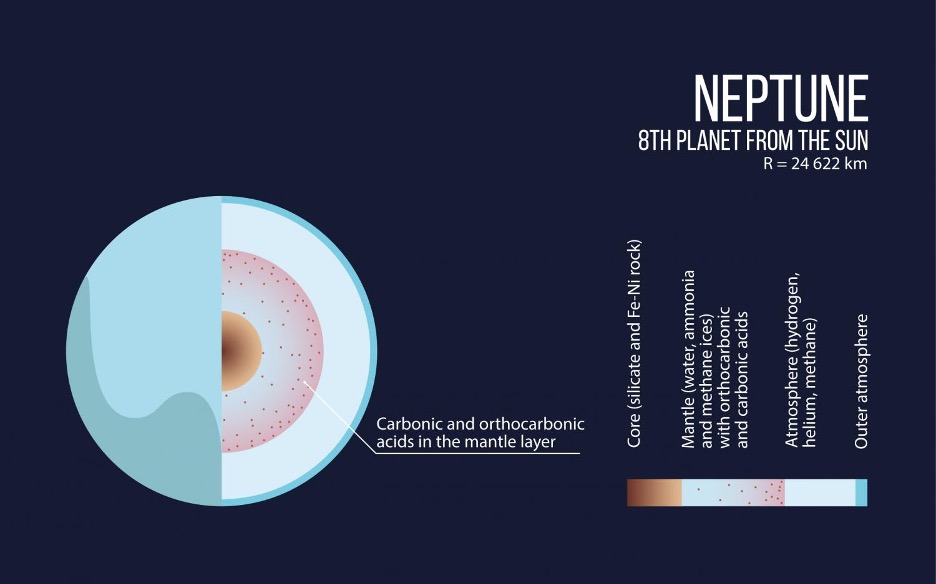
The upper surface of Neptune contains hydrogen (about 80%), helium (19%), as well as minimal amounts of methane, water vapour, ammonia (NH3), methanol (CH3OH), ethylene (C2H4) and other hydrocarbons. As they approach the centre of the planet, gases condense into a mantle, which planetary scientists call ice, although, in fact, it is a liquid and hot substance of methane, ammonia, water and other compounds.
What colour is Neptune?
Recent research led by UK astronomers has debunked our previous perceptions of the colours of Neptune and Uranus. While images from a space mission in the 1980s portrayed Neptune as a vibrant blue and Uranus as green, the study reveals that both ice giant planets share similar shades of greenish-blue.
The earlier images of Neptune had been manipulated to showcase atmospheric details, distorting its true colour. The composite colour images were not consistently balanced, and contrast enhancements unintentionally rendered Neptune bluer than its actual hue.
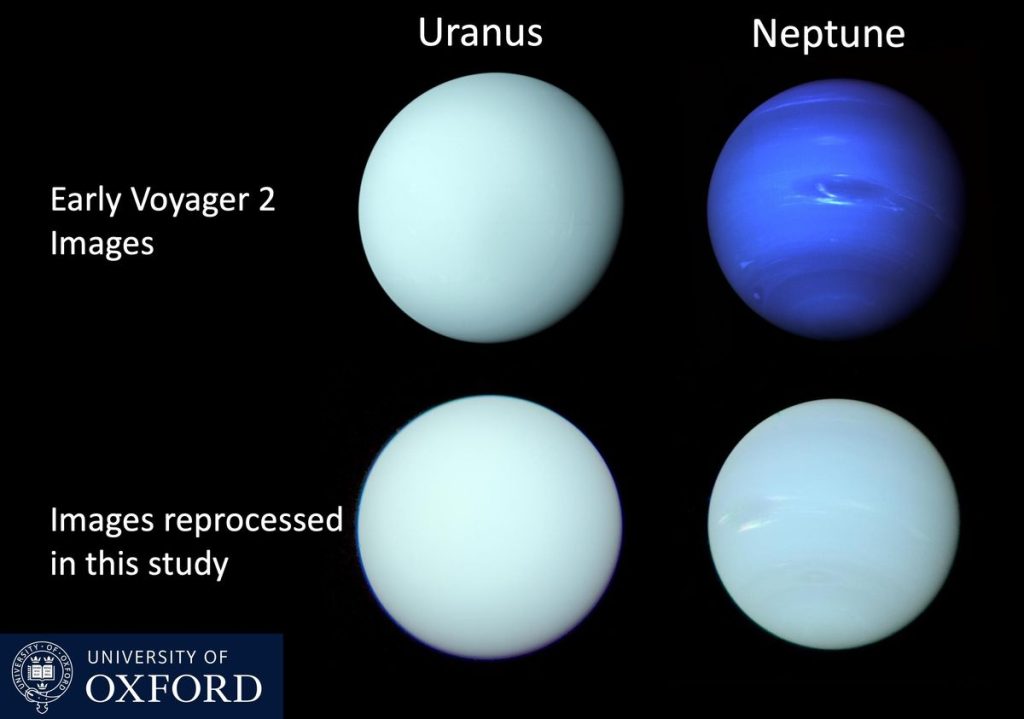
Researchers used data from the Hubble Space Telescope Imaging Spectrograph and the Multi Unit Spectroscopic Explorer to accurately determine the true colours of both planets. The analysis disclosed that Uranus and Neptune exhibit a comparable greenish-blue hue, with a subtle distinction. Neptune possesses a slight touch of additional blue attributed to a thinner haze layer.
Is Neptune full of water?
There are several hypotheses about the origin of water on Neptune:
- Transport from outer regions: Water ice objects such as comets or asteroids can enter the inner part of the Solar system and collide with Neptune. In such collisions, icy materials, including water, can fall on the planet’s surface.
- Internal hydrogen: Neptune’s surface temp and pressure can create conditions where hydrogen forms compounds with oxygen, including water. This can occur in the planet’s depths, where hydrogen is in a metallic state.
- Internal Chemical Processes: Water can form due to chemical reactions in Neptune’s inner layers, such as between hydrogen and oxides present in the planet’s mantle.
It is important to note that at the moment, there is no evidence of the presence of significant amounts of water on Neptune in liquid or solid state. Water on Neptune is predominantly found as vapour in the atmosphere.
How cold is the surface of Neptune?

The Neptune surface temperature in the uppermost cloud layer is approximately -218 degrees Celsius (-361 degrees Fahrenheit or 55 degrees Kelvin). This makes Neptune the coldest planet in the solar system. It is colder only on Pluto (-240 Celsius) but has not been a planet for a long time.
It is important to note that as you go deeper into Neptune’s atmosphere, temperature and pressure increase significantly due to the internal heat and compression of the planet. Remember about the liquid mantle? There, the temperature reaches 5,000 degrees Celsius; in the core, it rises to 7,000 (12,600 degrees Fahrenheit).
Thus, although the upper atmosphere of Neptune is very cold, the temperature rises sharply as you move towards the planet’s core.
What is the surface gravity on Neptune?
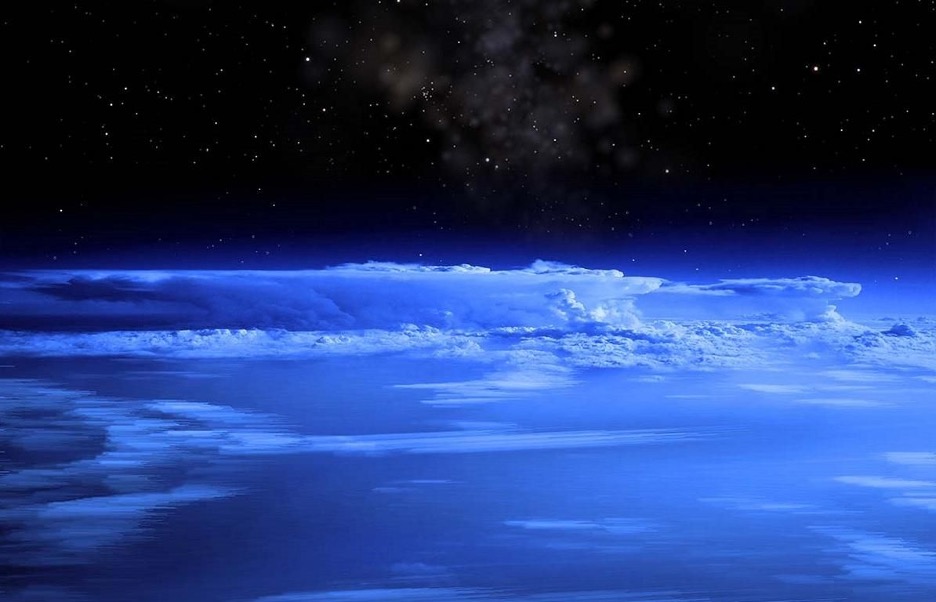
Before answering this question, let’s understand the concepts. We know that gravity is an attraction between two objects and can be determined by knowing their mass and the distance between them. However, Neptune does not have a solid surface, so the exact distance to it is impossible to calculate, and the gravitational field inside Neptune constantly changes at different depths due to variations in density and pressure. And this is where Neptune’s surface gravity comes to the rescue, or in other words, the acceleration of free fall. To calculate the gravity of Neptune’s surface, we need the formula:
where:
- g – surface gravity,
- G – gravitational constant,
- m – Neptune’s mass,
- r – Neptune’s radius.
Using the known mass of Neptune (approximately 1.0243×10^26 kilograms) and its average radius (approximately 24,622 kilometres or 15,299 miles), we get a surface gravity of 11.15 meters per second squared (m/s^2), which is 14% more than on Earth (9.8 m/s2).
This means that if you could stand on Neptune as you would on Earth, your weight would be 14% heavier, but since you will only fall on Neptune, your falling speed will increase every second by 11.5 meters. Again, this is an average value that does not take into account the variations and complexities of the gravitational field inside Neptune. Gravity at different depths will be different due to the planet Neptune surface features, such as density and pressure.
Summary
So now you know enough about the surface of Neptune to get an idea of this gas giant and to show off your erudition in the company of your friends. The planet is too far away and completely inhospitable for us, but as a shield, it protects us from excess solar radiation and collisions with potentially dangerous asteroids. It is worth remembering this with gratitude when talking about this big blue planet at the Solar system’s edge.

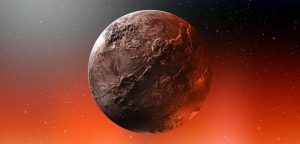




Thank you for your comment! It will be visible on the site after moderation.